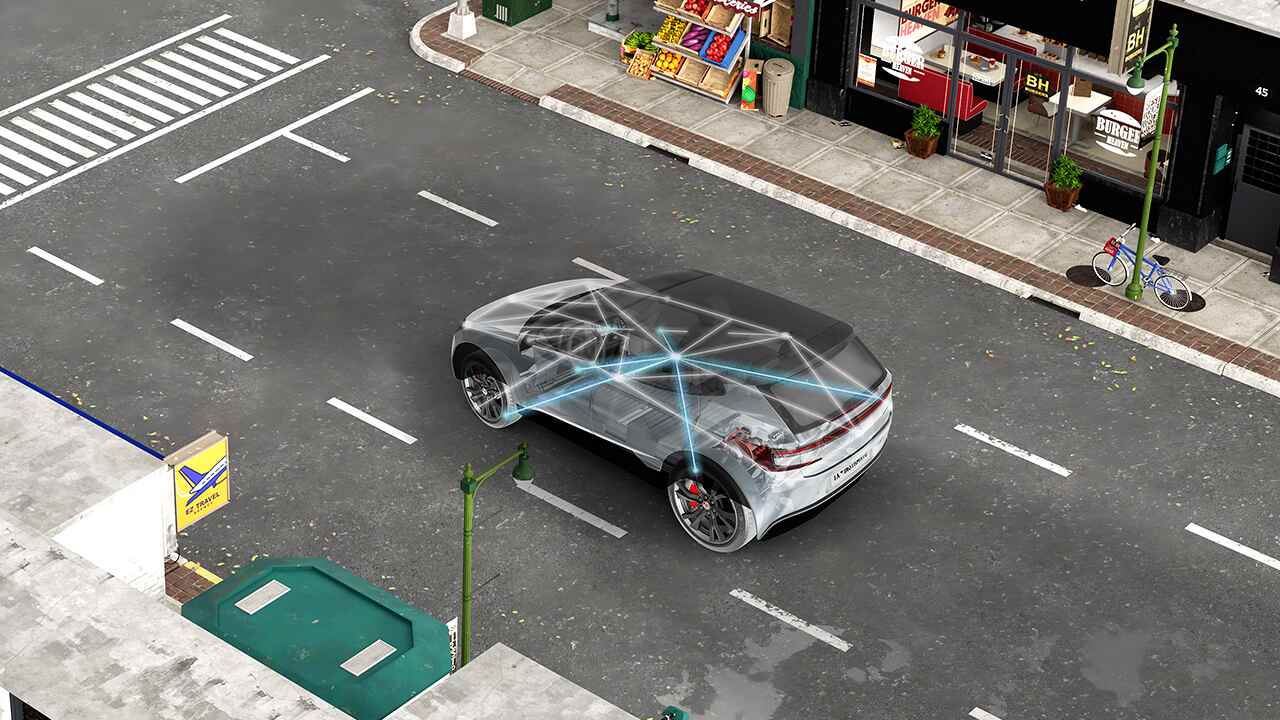From electric vehicle charging stations to solar energy solutions, cities are becoming more efficient through technology advances like real-time control

In Shanghai last year, a long-discussed theory was put to the test: Can electric vehicles (EVs) become a flexible energy resource for the city’s power grid?
EV drivers took signals from utility companies about when to charge up, harnessing renewable energy when it was most available and taking advantage of a resource that might otherwise go to waste.1 EV batteries became energy storage vessels on wheels that could release surplus power into the main grid when energy demand exceeded supply.
The innovative pilot program showed that different types of chargers, such as home chargers used in day-to-day life, public chargers and battery swap stations, could all play different roles in supporting the city’s power grid. Now, as part of China’s New Infrastructure plan, the expansion of new-energy vehicle charging stations is a crucial part of its strategy to meet long-term modernization and environmental goals.
Other cities across the globe are moving swiftly to improve efficiency and lower emissions. Technology that solves energy-efficiency challenges while offering greater power density is at the core of helping them deliver on that promise.
Focusing on enhancing a system’s real-time control capabilities – the just-in-time processing that gathers data and updates a closed-loop system within a trillionth of a second – can translate to major improvements in reducing emissions through more efficient and more capable systems. Real-time control is the key to unlocking the next wave of innovation in energy management.

Matt Watson, manager of C2000™ microcontrollers
As the manager of C2000™ microcontrollers (MCUs) at TI, I’ve watched the need for real-time control grow alongside the desire to do more with less energy. Looking forward, here’s where I see real-time control making the greatest impact for mobility and energy usage:
- Extending the range and performance of EVs.
- Upgrading and enhancing EV charging infrastructure.
- Revolutionizing energy storage through solar energy solutions.
Why real-time control matters
Though real-time control isn’t new technology – TI introduced the purpose-built controller almost two decades ago, building the innovation upon digital signal processing – the global MCU market has grown considerably in recent years due to the widespread use of these components in smart, automated systems.2 Real-time control systems are closed-loop control systems with a tight time window to gather data, process that data and update the system. This control is important in both power conversion and advanced motor control applications, such as movement of a robot in a factory.
Design engineers face increasing demands for efficiency, precision, and size in their products that spin motors or convert power. Maximizing and optimizing real-time control requires the embedded device used in a system to be built specifically to minimize latency, and to be power-efficient and cost-effective. By trying to use a device that was never intended for real-time control, engineers may be unintentionally extending their design time compared to using a single microcontroller intended for control applications.
When we apply real-time control technology to certain energy-conscious efforts in cities – such as increasing EVs and harnessing solar energy – you can see the potential for a monumental impact on energy storage and management.
Extending the range and performance of EVs
Almost every subsystem in an EV relies on some form of real-time control. A lot of exciting innovations are making cars more efficient and a lot more fun to drive – while also addressing range anxiety, charging time and other barriers to widespread EV adoption.

New power technologies, such as gallium nitride (GaN), have the potential to address those challenges by increasing power density, improving efficiencies, enhancing driving range and improving reliability. But to unlock GaN’s potential, a real-time controller is required, capable of high switching frequencies combined with configurable control to minimize power loss and noise. The microcontroller helps GaN achieve the highest level of power efficiency and power density.
Further advances in real-time control that increase the processing capabilities and expand the sensing and actuation performance will result in higher precision and efficiency, while also helping make vehicles more affordable through higher system integration.
Upgrading and enhancing EV charging infrastructure
With all the momentum behind EVs – and as car manufacturers make investments to repurpose their fleets to run on cleaner energy – cities may need to invest in better charging infrastructure to support their growing numbers.
The technology inside these charging stations must be cost-effective and must speed charging times. Real-time control is crucial to delivering a fast-charging experience and minimize power loss, all while reducing strain on the grid infrastructure, since EV charging systems convert the grid’s AC power into the DC power that’s used to charge an EV battery. This efficiency also helps drivers charge their batteries quickly and get back on the road sooner.
Revolutionizing energy storage through solar energy solutions
The experiment in Shanghai is just one way cities are trying to transform renewable energy into a flexible power resource.
There’s an evolution underway in solar inverter systems to leverage battery storage and provide access to energy even when the sun is not shining. These systems combine a few key pillars of real-time control: the transfer from the solar panel to the grid, the transfer from the grid to the battery where energy is stored, and then from the battery back to the grid. These are three points where power has to be converted and where power could be lost unless care is taken in the design. Real-time control delivers the accuracy needed to maximize output while minimizing power loss in bi-directional power conversion, which allows efficient two-way flow of DC and AC power within the system.
Renewable energy needs real-time control. In a world with growing urgency to reduce carbon emissions, real-time control is at the heart of making systems more energy-efficient and enabling a greener world.
1.) https://www.nrdc.org/experts/barbara-finamore/how-ev-charging-can-clean-chinas-electricity-grid
2.) https://www.techiexpert.com/microcontroller-market-is-projected-to-reach-usd-20-billion-by-2027/



